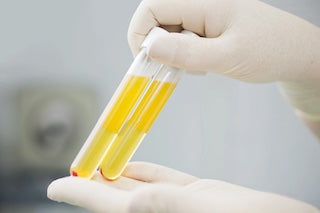The global COVID-19 pandemic has affected people worldwide by infecting millions and disrupting the daily lives of those who have not developed an illness. COVID-19 can have devastating consequences for people who do get infected, especially for the elderly and those who already have underlying health conditions.
An estimated half a million people worldwide have died from COVID-19, and the speed at which it has spread has made it difficult for researchers to study and discover effective treatments. Developing treatments can take years, and with COVID-19 infecting 14 million people over about half a year, the need for effective treatments now has become a priority.
Convalescent Plasma Background
One potential treatment method that has shown promise and has been researched since the beginning of the pandemic is the use of convalescent plasma, sometimes referred to as therapeutic plasma.
Why Convalescent Plasma Might Work
The basic concept behind convalescent plasma involves understanding how the body fights against infection. When an infection of any kind is present, the body will use the immune system to fight off the infection. It creates antibodies - proteins that recognize and attach to infectious agents. This process marks these infectious agents for distraction by the body’s immune system.
The first time someone has a specific infection, it takes the body time to recognize and start producing antibodies. It is during this initial period that most of the symptoms of an infection will occur. As antibodies are made, the body begins fighting infection more effectively, eventually overcoming the infection. When antibodies are present long-term, they create immunity by attacking the disease the moment it enters the body again instead of having to start making antibodies against that specific disease all over again.
At the beginning of the COVID-19 pandemic, researchers realized that those who overcame the viral infection likely did so by developing antibodies that fought against the infection. Researchers recognized that if someone who was just beginning a COVID-19 infection had antibodies, they would likely recover quickly and could avoid the severe and life-threatening conditions that it could cause.
Other Potential Treatments With COVID-19 Antibodies
There have been some attempts to manufacture artificial antibodies, but this is very technically difficulty to do. A vaccine, in theory, would help people to develop these antibodies on their own, making them immune. While a lot of time and effort has gone into making a vaccine, it may be months before one is available, and could even be longer. Finding a way to treat people who are sick today has been imperative.
The Science Behind Convalescent Plasma
Convalescent plasma is a relatively easy and more cost-effective method of giving people antibodies with which they can fight a COVID-19 infection. Using convalescent plasma involves taking plasma (the watery part of the blood) from those who have recovered from COVID-19 and giving it to someone who has active COVID-19. Plasma taken from someone who has recovered from COVID-19 will have natural antibodies that are necessary to fight a COVID-19 infection. By taking plasma from someone who has recovered from COVID-19 and using the antibodies it contains, it is likely that the person receiving treatment will have a quicker and less complicated course of infection, making them much more likely to survive without any long-term problems.
The State of Convalescent Plasma Research
Research on convalescent plasma is only just starting to emerge, but initial results seem promising. There are difficulties with trying to research something this complex in the middle of a pandemic; however, a large national research program being run by Mayo Clinic has helped to organize and coordinate research efforts across the country.
There has not been much scientific research published on the topic of convalescent plasma from the Mayo Clinic lead studies, although this is likely because it is still in the early stages of this research. Early preliminary results do indicate that using convalescent plasma seems to be safe for the majority of patients. While there is not much research available, preliminary and anecdotal reports do indicate that this treatment option has been effective.
Preparing for Convalescent Plasma Therapy
As COVID-19 case numbers continue to rise across the country, there continues to be a high demand for potential treatments. If the trend of promising results with convalescent plasma trials is maintained, then providers and organizations will need to be prepared to offer this therapy to patients.
One of the largest considerations that can be planned for now is the additional storage space that the convalescent plasma will require. Plasma that is used routinely in hospital settings is typically frozen and then thawed at the time of administration. It seems logical that hospitals or blood banks will be required to store convalescent plasma used to treat COVID-19 separately from ordinary plasma, and organizations should plan now for the additional storage space that convalescent plasma is likely to require.
K2 Scientific
We are here as a resource for you and your patients during this difficult crisis. Call us today at 1.800.218.7613 or contact us using our contact form to learn more about our storage solutions for the COVID-19 convalescent plasma therapy that your organization may need to accommodate soon.
Disclaimer: K2 Scientific does not provide medical advice and our content is intended for informational purposes only. Our content is not a substitute for professional medical advice, diagnosis or treatment of any disease or disorder. Specific medical questions should be directed to licensed healthcare providers or to an appropriate healthcare agency or entity and clinical practice or medical decisions should only be made using the advice of licensed healthcare professionals or sources recognized as medical authorities.
